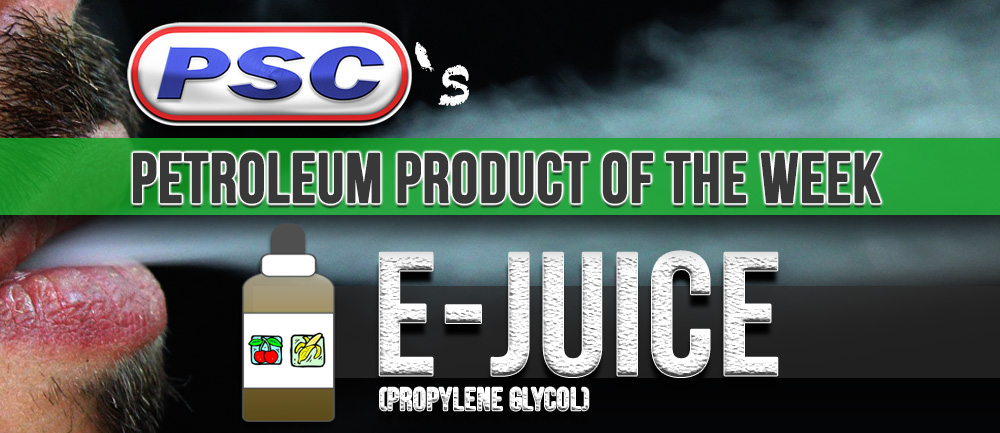
It’s in your antifreeze. It’s in your food. It’s in your VAPE JUICE, brah.
It’s Propylene Glycol – or PG, among industry folk and the vaping community. While it may sound a great deal more foreboding than its thicker, sweeter counterpart, Vegetable Glycerin — the 2nd of two base fluids used in vape juice production — this clear, odorless, near-flavorless liquid is completely harmless (as far as we know).
This product is often the main ingredient in those pesky “flavored liquid compounds commonly employed in electronic e-cigarette apparatuses” (or e-juice, for any human being that isn’t currently operating as a staff writer for a major online publication).
Manufacturers at Dow Chemical are the world leading producers of PG.

Every year, Dow manufactures about 1.2 billion pounds of this rather boring-looking fluid. However unremarkable in appearance, the versatile propylene glycol is one of the most widely-distributed chemical products in the industry; and while it has received a great deal of attention from the medical and vaping communities in recent years, it’s been widely used in foods, medicines, and other products intended for human consumption for decades (so, yes, you’ll likely recover completely from those second-hand vape clouds you’ve had no choice but to wincingly wade through on your daily commute to work).
While PG is commonly touted in the media as being manufactured all-but-exclusively for the production of antifreeze and vape juice – which is a ludicrous notion – this product is actually used for the mass production of the following goods: packaged foods, flavorings, fragrances, cosmetics, aircraft deicing fluids, heat transfer fluids, hydraulic fluids, [the] pharmaceuticals (great band name), [the] solvents (not half-bad either), and [the] plasticizers (oh, wow , it’s perfect!).
What everyone entrenched in this volatile debate needs to know is this (from dow.com):
Dow offers its…Propylene Glycol USP/EP grade of MPG for foods, pharmaceuticals, cosmetics and other applications involving possible ingestion or absorption through the skin, and its Propylene Glycol Industrial Grade (PGI) of MPG for other uses.
Could it be?! Things aren’t black and white!?
Well, propylene glycol itself is made from petroleum byproducts – while this may sound a bit nasty for inhalation, the finished product is almost completely pure (if, of course, it is USP/EP grade). Through hydrocarbon cracking, a natural byproduct propene is formed – which, in turn, is compressed into a liquid which is used as the starting fluid for the ever-complicated propylene glycol. Beyond that point – well – I’m not really sure how to explain it in laymen’s terms.
Put simply, propylene glycol is propylene glycol – not matter how you look at it; the end point is always the same carbon-chain. The USP/EP grade that Dow references is likely a more extensively refined, contaminant-free variety of the same substance – this is how it’s earned its certification. In a way, it’s a great deal similar to automotive lubricants (of course we had to go there); surely, all non-synthetic mineral oils are made from petroleum, but they are highly refined to remove the unwanted debris and byproducts found in mined crude oil. Likewise, the less pure the propylene glycol, the less fit it is for human consumption.
The variety of PG used in the manufacturing of vape juice is deemed fit for human consumption – so until someone declares otherwise, there is no reason to go punch that “filthy cloud-blower” in the face (I’m just kiddin’ guys, relax).
So while propylene glycol is used to make heat transfer fluids, automotive additives, antifreeze, break fluid, and de-icers, it is also used in the manufacturing process of about a million other products. (We know how you feel, vapers – we’re in the petroleum industry, for goodness sake. We’ve started this series in attempt to show people the sheer amount of products that we consume on a daily basis that are actually made from petroleum. We’re honored to count Propylene Glycol among them.)
Case closed — Now go find some other community to badger.


